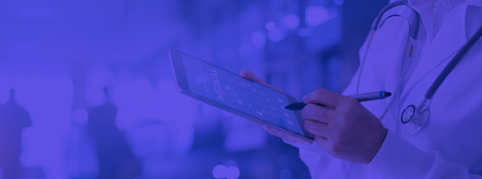Read news, articles, knowledge posts and opinions
on technology in healthcare
A Healthcare delivery system that uses digital technologies to gather patient data & electronically transmit it to healthcare providers in a different location.
The world is witnessing a rapid
increase in the aged population. According to the US Census Bureau, 83.7
billion people are expected to be aged 65
years or above by 2050. The largest proportion of healthcare consumers are
seniors. As reported by NCOA, 80% of the older adults have at least one chronic
disease
and 68% have at least two. The COVID-19 pandemic has made it highly
risky for seniors to visit healthcare facilities as they have the highest
mortality rate. Besides, transportation barriers and rising healthcare costs
make it challenging for senior citizens to visit medical clinics even during
normal times. As per a study reported in NCBI, healthcare costs increase
exponentially after
the age of 50, and elderly care is four-five times costlier than individuals
in their teens.
Remote health monitoring becomes a
massive game-changer and one-stop solution to all these problems. Home patient
monitoring has come to the spotlight for providing necessary care to the
at-risk senior population while maintaining the social distance protocols.
According to a report by Zion Market Research, the global market value for home
healthcare is expected to surpass
$391 billion by 2021.
WHAT IS
REMOTE HEALTH MONITORING?
RHM (or RPM) is a healthcare delivery
system that uses digital technologies to gather patient data and electronically
transmit it to healthcare providers in a different location. It makes use of
wearables, monitoring devices with sensors, smartphone apps, etc. to allow the healthcare
providers to remotely track patients’ health data, including heart rate, blood
pressure, weight, sugar level, and other vital signs.
It is instrumental in managing
diabetes, controlling obesity, reducing the risk of heart failure, managing
chronic diseases and ensuring geriatric well-being through continuous
surveillance. Remote Patient Monitoring also reduces strain on the healthcare
system by increasing the doctors’ capacity to treat more patients and
decreasing hospitalizations, readmission, and length of stay in hospitals.
BENEFITS
OF RHM FOR SENIOR CITIZENS
Remote health monitoring has led to
momentous changes in many lives. A tele-homecare platform allowed a
66-years-old woman from Delhi to consult a medical professional in the middle
of the lockdown. The patient was collecting fluid in her lungs, and early
intervention with further testing helped her stay home and prevent
hospitalization.
While there are obstacles to
overcome, Remote Health Monitoring is still essential to the healthcare
industry's future. RHM (or RPM) technology is a must-have for ensuring a safer
environment and better quality of life for the aging population in their golden
years.
4th Floor, 3rd Eye Vision Complex,
IIM Road Ahmedabad - 380015, Gujarat.

 Download Resources
Download Resources